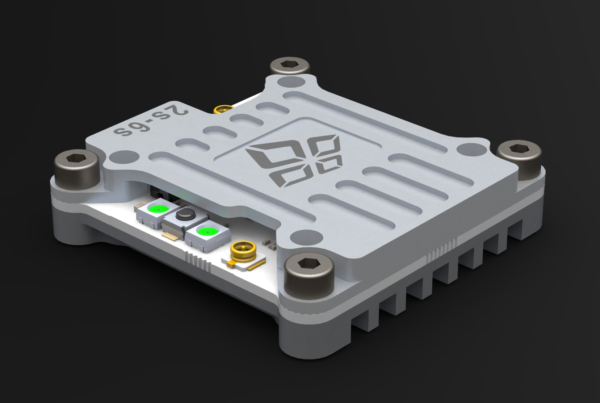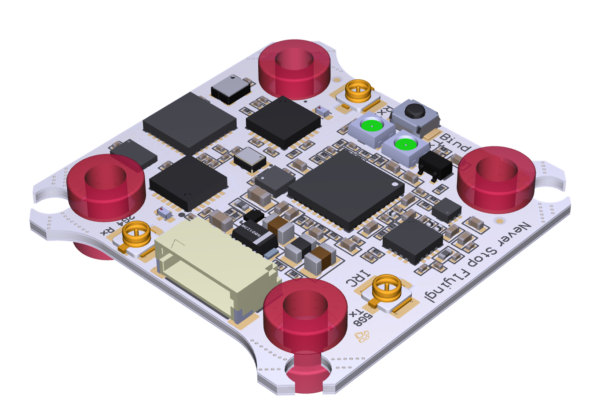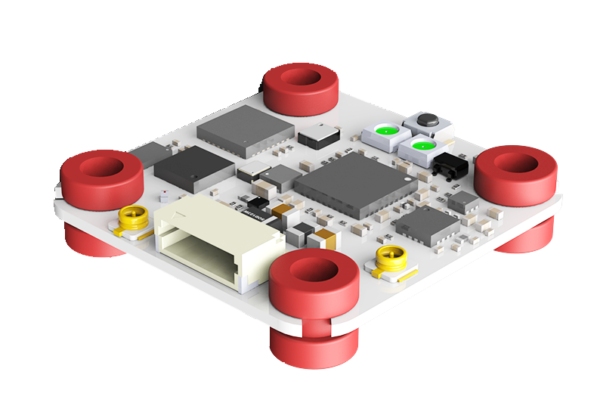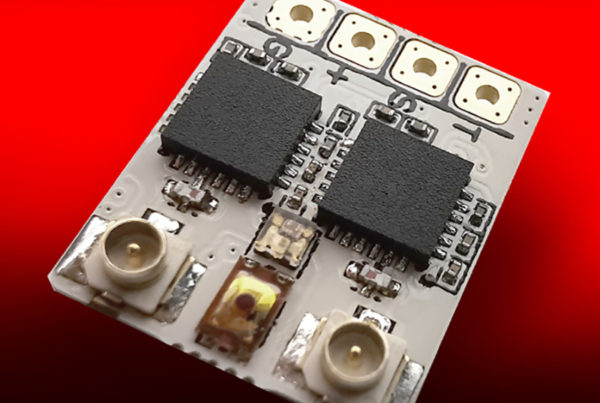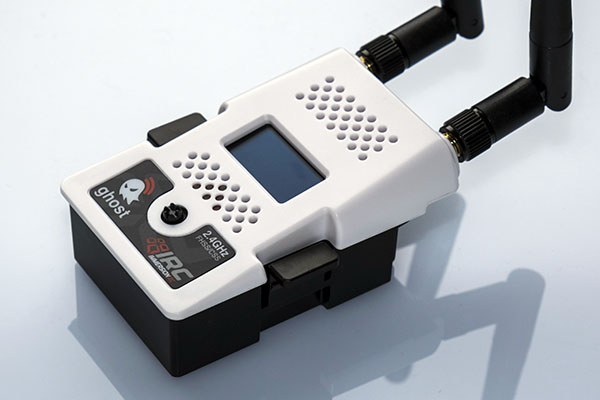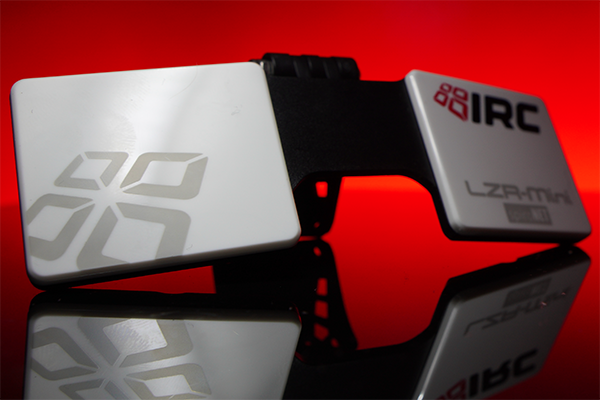Why would you need more?
From the engineers who changed the Analog FPV world with rapidFIRE, comes the Ghost to set a new bar for R/C Control technologies. Go faster, further, safer.
Three years in the making, countless fun-filled hours of testing by the world’s fastest pilots.
Designed in the home of long-range FPV, Switzerland.
2.4GHz ISM Band
‘JR’ Compatible Transmitter with Diversity Transmission
One Of The Smallest Receivers On the Market
Chirp Spread Spectrum, with Adaptive FHSS
Crazy Race Performance, 222.22Hz updates
~4ms End to End Latency, with OpenTx Integration
More range than most pilots will ever need

IRC Ghost is PFQ (Pretty… Quick)
Choose from several modes of operation in your Ghost Transmitter. The slowest of the two Race modes runs at 160Hz frame rate, while the fastest ‘Pure Race’ rate opens the throttle to 222.22Hz frame rate.
OpenTx to Flight Controller latency is expected to run below 4ms.
Can racers feel this? good question to ask… but maybe a better question is whether you want to race against a pilot which is using it…
2.4GHz And Long Range Capabilities
ImmersionRC is setting a new standard with its Ghost system serving both the needs of Long Range pilots, Freestylers, and Racers.
Easily achieve ranges of 10s of km with equipment light enough, and antennas compact enough, to perfectly accompany your Nano Goblin™ into the neighboring country.
Since 2.4GHz antennas are relatively small, a directional antenna on the transmitter can easily double the expected range.

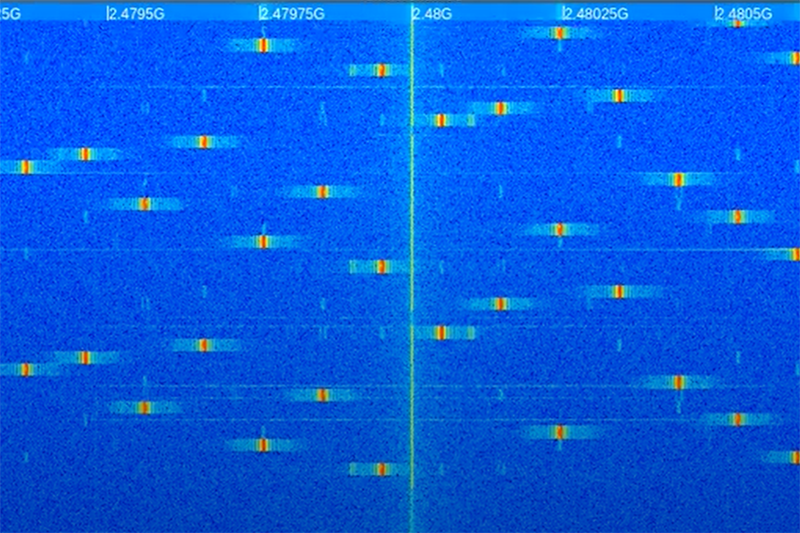
‘Micro Failsafes’ – Never Again
The EU-legal 868MHz is a paltry 2MHz wide. Packet loss with even 4 pilots in the air is not pretty. Add another 4, and racing isn’t fun any more.
The USA-legal 915MHz band is a little better, at 15MHz wide.
The Worldwide 2.4GHz band provides 76MHz of bandwidth, and will comfortably house countless simultaneous links without large numbers of lost packets.
With recent enhancements to Flight Controllers (feed-forward) providing superb performance, but quite sensitive to packet loss, every little helps.
Ghost Modular Transmitters
The first Ghost Transmitter is a ‘JR’ style module, with integrated OLED display and Joystick. Configure it seamlessly without the need to interact with Lua scripts.
Depending upon region, up to 350mW of RF power may be emitted through two supplied short-dipole antennas. Antenna diversity is the default mode of operation, but single antenna mode is a menu option away.
A simple menu system shows all critical parameters, including a spectrum analyzer, and a real time display of system latency, from R/C Tx to Flight Controller.
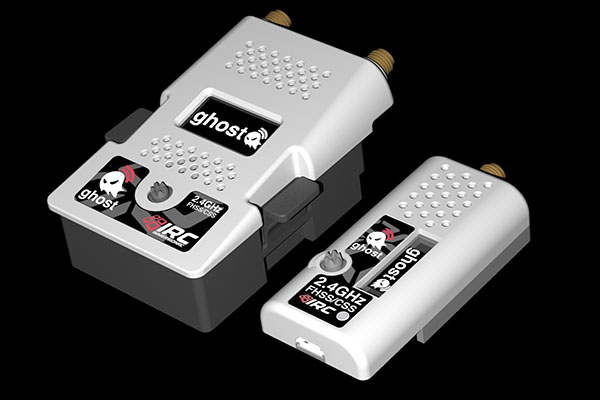
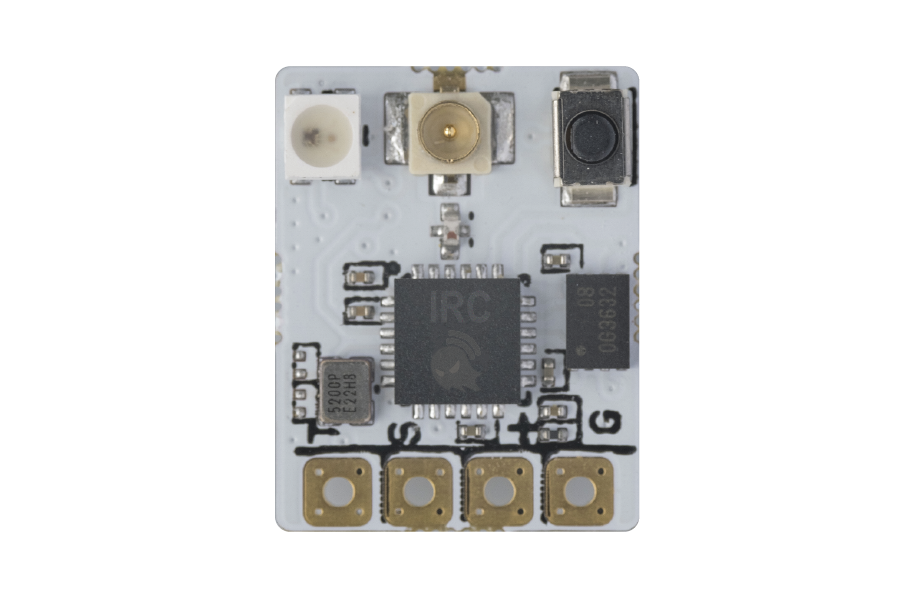
Tiny Receivers
Size matters. The Ghost Átto receiver weighs in at about 0.6g, and is only 14.8 x 11.5mm, a 15% smaller footprint than its closest competitor.
Most standard protocols are supported, including PWM, SBus, Fast SBus (200k), SRXL-2 (400k) and an inverted SBus (or rather an inverted-inverted SBus) to increase flexibility with F4 FCs.
Deja-Vu binding ensures that receivers already ‘known’ by a Ghost transmitter (through a previous bind operation) no longer require a button press to bind them. This also goes for new receivers, which will bind for the first time without the need for the button (all of this because we can’t stand tearing models open to find that buried bind button).
Editor’s Note: Should we mention that the Átto is the ‘Big’receiver?… more on that later.
Orqa Goggle Integration
That space on the FPV.Connect board… yeah, that is for a Ghost receiver, the Átto.
Ghost transmitters and receivers can form a network, without the need to use bluetooth or wifi, and communicate between themselves without sacrificing critical control performance.
Clear channel scan with automatic channel assignment, auto-start DVR recording when throttle stick is raised, and a bunch of other cool features planned for 2020.

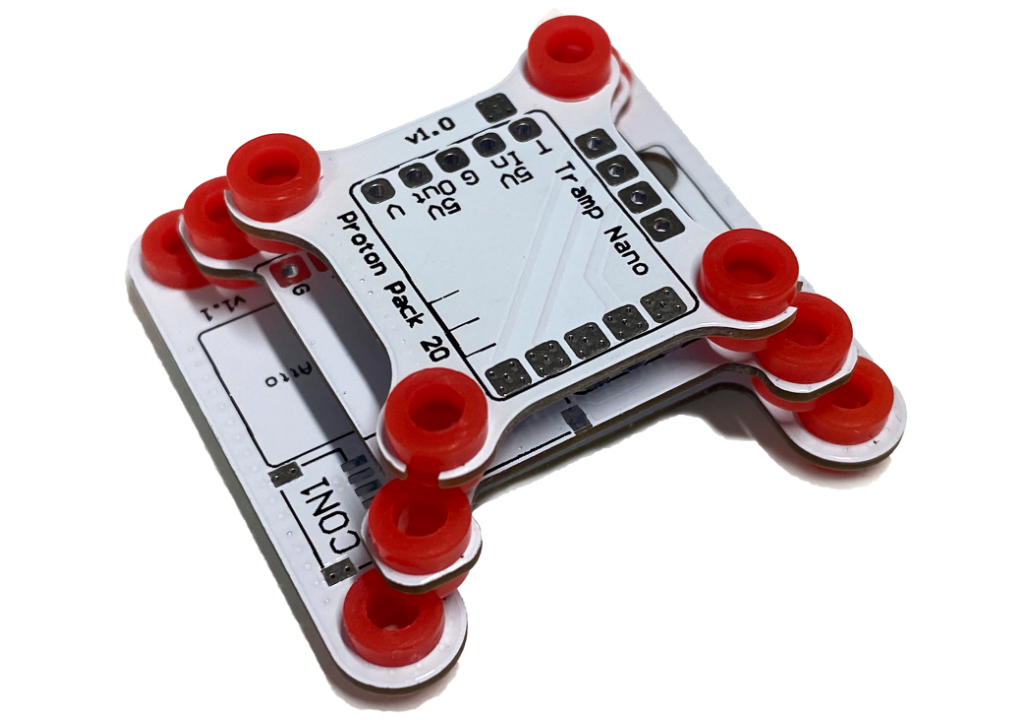
Proton Packs for Days
Simple PCBs designed to dramatically simplify wiring, mounting, and cooling of Tramp Nano + Ghost combinations.
36×36 single-sided, 20×20 double sided, 20×20 single sided, ‘Toothpick style’, and a special version designed for the Five33 Tiny Trainer.
qTee Antennas
qTee, a.k.a ‘Cutie’ antennas are center-fed dipoles, with integral balun to ensure no cable radiation, and without unexpected nulls in the radiation pattern.
Tip to Tip length of just 60mm, easy to install in anything from a Whoop™ to an X-Class quad
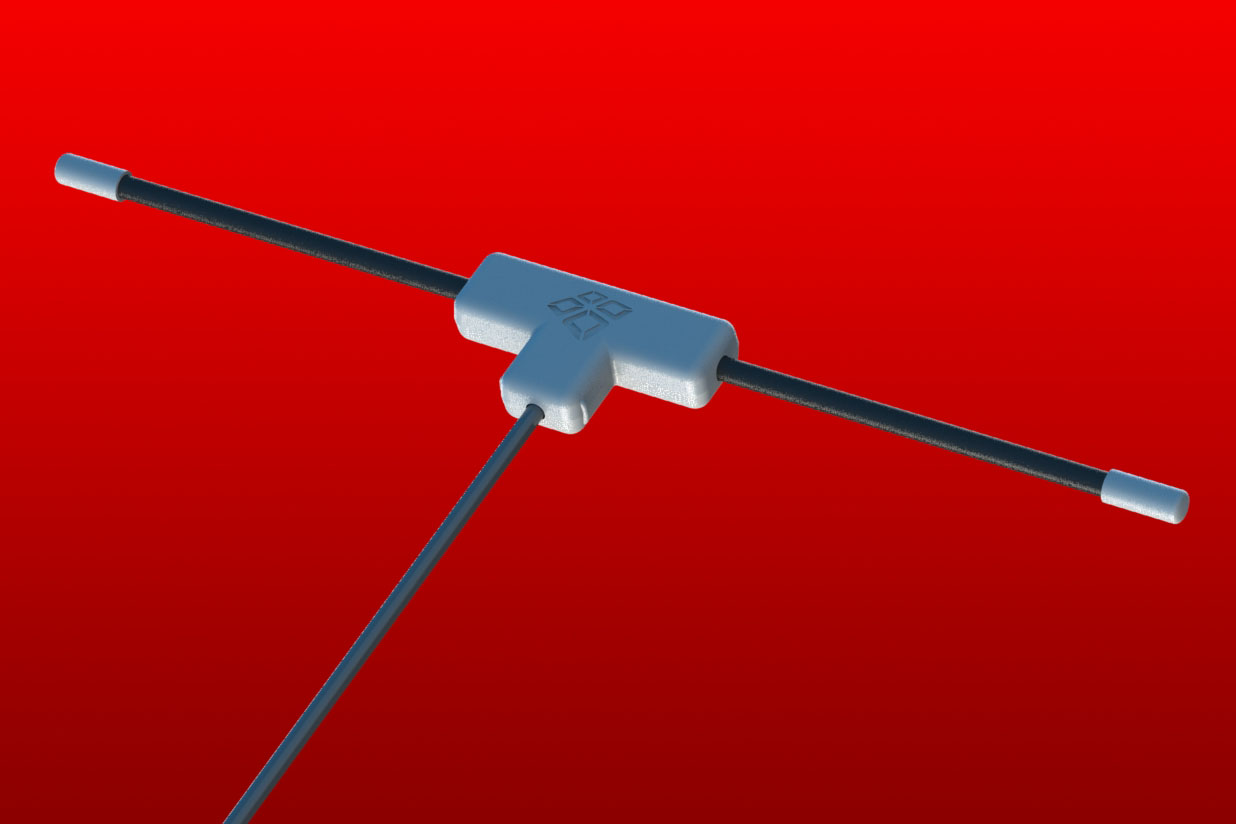
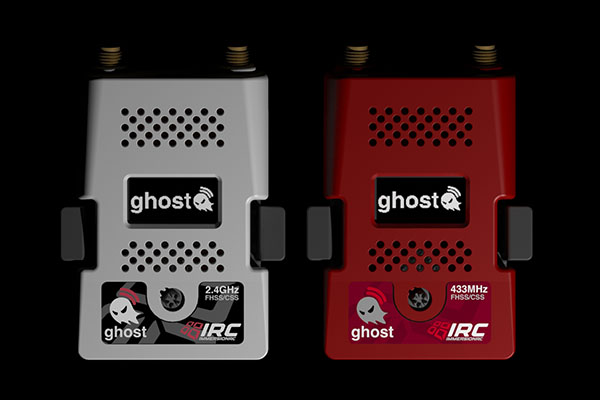
Systems Integrators/Manufacturers
ImmersionRC is open to discuss with manufacturers who wish to embed Ghost into other systems (Hobby, Industrial, Law Enforcement, etc.). An embedded Ghost 2.4GHz Rx occupies approx. 10mm x 10mm of PCB space.
For use on sub-GHz bands, the ‘Red Ghost’ product line can be custom ordered for use on licensed bands from 140MHz to 1GHz.
GPS + Noise
Another advantage of running 2.4GHz instead of the more traditional sub-GHz frequencies for long range is that 2.4GHz has no harmonics that can desensitize GPS receivers (which are in the 1.5GHz band), so GPS position fixes become more precise.
In addition, Drone/Quad/UAV electrical noise due to fast switching signals is broadband, and also sub-GHz (typically sub-500MHz), and doesn’t desensitize the 2.4GHz Ghost receiver.

SPECIFICATIONS & SUPPORT FILES
Essential Specs, User Manuals, Firmware & Downloads
GENERAL PRODUCT SPECIFICATIONS
Launch Date:6-Aug-2020
Frequency: 2.4GHz Band
Modulation: Chirp Spread Spectrum + Adaptive FHSS
Binding: Bidirectional, with confirmation and protocol negotiation
RF Profiles: Initially 4, Race, Pure Race, ‘Normal’, and Long Range, more to come
JR MODULE SPECIFICATIONS
Uplink RF Power: 16uW – 350mW (+/- 0.5dB)
Frame Rate: 222.22Hz (purerace), 160Hz (race), 55Hz (normal), 15Hz (long range)
Format:Standard JR Module, tested with FrSky Taranis™, and RadioMaster™ radios
Antennas: Twin antenna, with Tx-side diversity. Antennas are 2.1dBi Dipoles
Compatibility: Any R/C Tx which accepts JR modules (Taranis, etc. )
Serial Formats: SBus, GHST (Auto-Sense)
Firmware: USB Upgradable (with OTA updates for receivers)
Power Supply: 6V-20V, 1.75W @ 400mW, ~250mA at 7.4V
ÁTTO Rx SPECIFICATIONS
Downlink RF Power: +13dBm
Sensitivity: -117dBm in Long Range mode
Serial Formats: SBus, SBus-Fast (200k) , SRXL-2 (400k), GHST, SBus Inverted
Firmware: Over-the-air (OTA) upgradable
Power Supply: 5V recommended, as low as 3.6V tolerated, no more than 5.5V
vTx Control: Tramp control from ‘T’ pin on Rx, regardless of selected serial format
Antenna Connector: Standard U.FL (vs. Zepto which uses the much smaller MHF4)
Dimensions: 14.8mm x 11.5mm, 0.6g (w/o antenna)
Rx Noise Floor Analysis: Auto on power-up, or on demand from the Tx
ZEPTO Rx SPECIFICATIONS
Downlink RF Power: +13dBm
Sensitivity: -117dBm in Long Range mode
Serial Formats: SBus, SBus-Fast (200k) , SRXL-2 (400k), GHST, SBus Inverted
Firmware: Over-the-air (OTA) upgradable
Power Supply: 5V recommended, as low as 3.6V tolerated, no more than 5.5V
vTx Control: Tramp control from ‘T’ pin on Rx, regardless of selected serial format
Antenna Connector: Standard MHF4 (vs. Atto which uses the larger U.FL)
Dimensions: 10.0mm x 10.0mm, 0.38g (w/o antenna)
Rx Noise Floor Analysis: Auto on power-up, or on demand from the Tx
1 GHST protocol available in a custom OpenTX build at product first shipment.
2 Sbus is inverted by definition, SBus Inverted flips it over so that it doesn’t require inverters on F4 FCs
3 Some specifications vary depending upon the regionally-specific product SKU
USER MANUALS
OPENTX CUSTOM FIRMWARE
Ghost is fully supported in the stable OpenTx v2.3.13 release. This includes full support for the GHST protocol, and also the integrated OpenTx menus.
BETAFLIGHT FIRMWARE
The most complete support for the GHST protocol is currently in the latest ‘development’ build which be installed using the betaflight configurator.
Turn on the ‘Enable Expert Mode‘ switch in the firmware update page, and select ‘Development‘ in the selection bow below.
The latest version of the Betaflight Configurator, with the ‘GHST’ option in the protocol selection dropdown may be downloaded from here.
Note that if you are uncomfortable running a development build, consider using the SRXL-2 protocol with one of the official betaflight release builds.
UTILITY SOFTWARE
To use GHST widgets, extract the contents of the Widgets zip file into the ‘Widgets’ folder of the SD Card.


